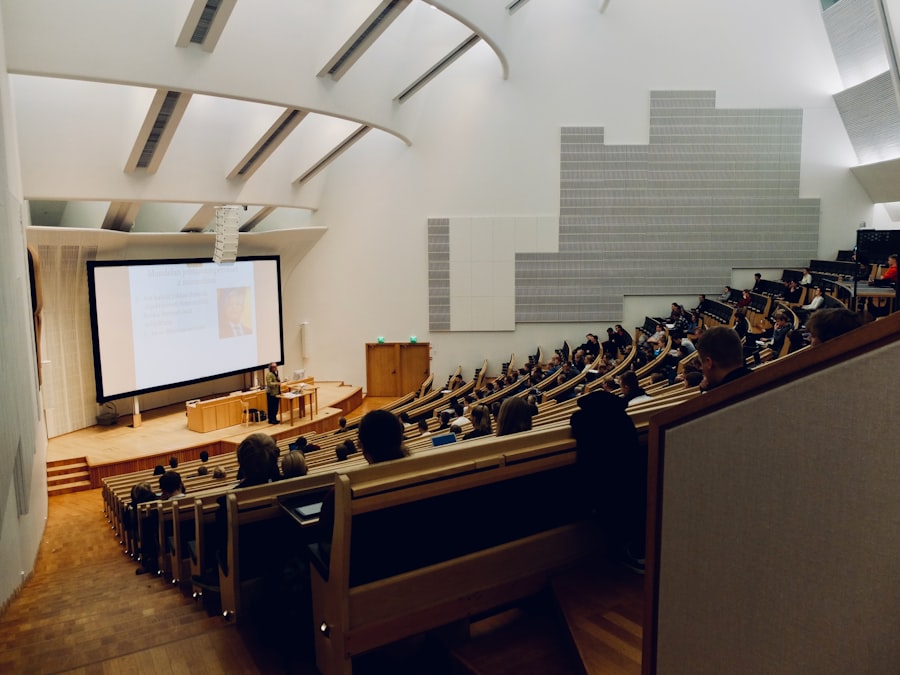
Language mastery is a cornerstone of effective communication, serving as a bridge between cultures, ideas, and individuals. In an increasingly globalized world, the ability to communicate fluently in multiple languages is not merely an asset; it is often a necessity. Mastery of a language goes beyond mere vocabulary and grammar; it encompasses the nuances of expression, cultural context, and the ability to convey complex ideas clearly and persuasively.
For instance, in international business, the ability to negotiate in a partner’s native language can foster trust and facilitate smoother transactions. This level of proficiency can significantly enhance professional opportunities and open doors that might otherwise remain closed. Moreover, language mastery plays a crucial role in cognitive development.
Studies have shown that learning a new language can improve memory, problem-solving skills, and even creativity. The mental exercise involved in mastering a language stimulates the brain, leading to enhanced cognitive flexibility. For example, bilingual individuals often demonstrate superior multitasking abilities and better performance on tasks that require switching between different concepts.
This cognitive advantage extends beyond academic settings; it can influence everyday decision-making and interpersonal interactions, making language mastery not just a skill but a vital component of personal growth and intellectual enrichment.
Key Takeaways
- Language mastery is important for effective communication, career advancement, and cultural understanding.
- Effective language acquisition strategies include setting realistic goals, practicing regularly, and seeking out authentic language experiences.
- Immersion in a language through travel, cultural activities, and social interactions can greatly enhance language learning.
- Overcoming challenges in language mastery requires perseverance, patience, and a willingness to make mistakes.
- Bilingualism and multilingualism offer cognitive benefits, career opportunities, and the ability to connect with diverse communities.
Strategies for Effective Language Acquisition
Effective language acquisition requires a multifaceted approach that combines various strategies tailored to individual learning styles. One of the most effective methods is the use of spaced repetition, a technique that involves reviewing vocabulary and grammar at increasing intervals. This method leverages the psychological spacing effect, which enhances long-term retention of information.
Language learners can utilize apps like Anki or Memrise, which are designed to implement spaced repetition algorithms, ensuring that learners revisit words and phrases just as they are about to forget them. This technique not only solidifies memory but also builds confidence as learners see their progress over time. Another powerful strategy is the integration of language learning into daily routines.
This can be achieved through immersive practices such as labeling household items with their names in the target language or setting aside specific times each day for language practice. Engaging with media in the target language—such as watching films, listening to music, or reading books—can also enhance comprehension and pronunciation skills. For instance, a learner interested in Spanish might watch popular telenovelas or listen to Spanish-language podcasts, allowing them to absorb the rhythm and intonation of the language while simultaneously expanding their vocabulary in context.
By embedding the language into everyday life, learners create a rich environment that fosters continuous exposure and practice.
The Role of Immersion in Language Learning

Immersion is widely regarded as one of the most effective methods for achieving fluency in a new language. This approach involves surrounding oneself with the target language in various contexts, thereby facilitating natural learning through exposure and interaction. Immersion can take many forms, from studying abroad in a country where the language is spoken to participating in local language exchange meetups.
For example, students who study in countries like France or Japan often find that their language skills improve dramatically due to daily interactions with native speakers and the necessity of using the language in real-life situations. The benefits of immersion extend beyond mere vocabulary acquisition; it also enhances cultural understanding and contextual usage of the language. When learners engage with native speakers, they gain insights into idiomatic expressions, cultural references, and social norms that are often absent from traditional classroom settings.
This experiential learning fosters not only linguistic competence but also cultural empathy. For instance, a learner immersed in Italian culture may come to appreciate the significance of gestures and body language in communication, which are integral to conveying meaning in Italian conversations. Such experiences enrich the learning process and create lasting connections between language and culture.
Overcoming Challenges in Language Mastery
| Challenges | Strategies |
|---|---|
| Lack of vocabulary | Reading extensively, using flashcards, and practicing with native speakers |
| Grammar difficulties | Taking grammar classes, using language learning apps, and seeking help from tutors |
| Pronunciation barriers | Listening to native speakers, practicing speaking aloud, and using pronunciation guides |
| Language anxiety | Joining language exchange groups, practicing regularly, and building confidence through small successes |
Despite the numerous benefits associated with language mastery, learners often encounter significant challenges along their journey. One common obstacle is the fear of making mistakes, which can inhibit speaking practice and lead to frustration. Many learners grapple with self-doubt, worrying about pronunciation errors or grammatical inaccuracies when conversing with native speakers.
To overcome this barrier, it is essential to adopt a mindset that views mistakes as valuable learning opportunities rather than failures.
Another challenge is the potential for plateaus in progress, where learners feel stuck despite their efforts.
This stagnation can be disheartening and may lead some to abandon their language studies altogether. To combat this issue, learners should set specific, achievable goals that provide clear benchmarks for progress. For instance, instead of aiming for general fluency, a learner might focus on mastering a particular topic or skill set within a defined timeframe.
Additionally, varying study methods—such as incorporating games, conversation partners, or even travel—can reignite motivation and enthusiasm for learning. By embracing flexibility and creativity in their approach, learners can navigate challenges more effectively and maintain momentum on their path to mastery.
The Benefits of Bilingualism and Multilingualism
The advantages of being bilingual or multilingual extend far beyond mere communication skills; they encompass cognitive, social, and economic benefits that can significantly enhance an individual’s quality of life. Research has consistently shown that bilingual individuals tend to exhibit improved cognitive abilities compared to their monolingual peers. These cognitive benefits include enhanced executive function skills such as problem-solving, multitasking, and decision-making.
For example, bilingual children often outperform their monolingual counterparts on tasks requiring attention control and cognitive flexibility due to their experience in switching between languages. Socially, bilingualism fosters greater cultural awareness and sensitivity. Individuals who speak multiple languages are often more adept at navigating diverse social environments and building relationships across cultural boundaries.
This ability can be particularly advantageous in professional settings where collaboration with international teams is common. Furthermore, bilingualism can enhance employability; many employers actively seek candidates who can communicate with clients and colleagues in multiple languages. In sectors such as tourism, healthcare, and education, being multilingual can be a decisive factor in hiring decisions, leading to increased job opportunities and career advancement.
Using Technology to Enhance Language Acquisition

Language Learning Apps
Language learning apps like Duolingo or Babbel provide structured lessons that incorporate gamification elements to make learning enjoyable and motivating. These platforms often include features such as speech recognition technology that allows users to practice pronunciation and receive instant feedback on their speaking skills.
Language Exchange and Cultural Insights
Moreover, technology enables learners to connect with native speakers around the globe through platforms like Tandem or HelloTalk. These applications facilitate language exchange by pairing users with conversation partners who are fluent in the target language while seeking to learn the user’s native tongue. Such interactions not only enhance conversational skills but also provide cultural insights that enrich the learning experience.
Access to High-Quality Educational Content
Additionally, online courses offered by institutions like Coursera or edX allow learners to access high-quality educational content from renowned universities worldwide, further broadening their linguistic horizons.
Cultivating a Positive Mindset for Language Mastery
A positive mindset is crucial for successful language mastery; it influences motivation levels and resilience in the face of challenges. Cultivating this mindset begins with setting realistic expectations about the learning process. Language acquisition is inherently gradual; thus, understanding that progress may be nonlinear can help mitigate feelings of frustration when faced with obstacles.
Embracing a growth mindset—where learners view challenges as opportunities for development—can significantly enhance perseverance and commitment to mastering a new language. Additionally, celebrating small victories along the way can reinforce motivation and foster a sense of accomplishment. Whether it’s successfully holding a conversation with a native speaker or mastering a difficult grammatical structure, acknowledging these milestones encourages continued effort and engagement with the language.
Joining supportive communities—both online and offline—can also provide encouragement and camaraderie among fellow learners who share similar goals. By surrounding themselves with positive influences and focusing on progress rather than perfection, learners can cultivate an environment conducive to sustained growth and enjoyment in their language journey.
Practical Applications of Mastering Language
Mastering a language opens up a myriad of practical applications that extend into various aspects of life. In professional contexts, fluency can enhance career prospects by enabling individuals to work effectively in multicultural environments or engage with international clients. For instance, professionals in fields such as diplomacy or international relations often rely on their language skills to negotiate treaties or foster cooperation between nations.
Similarly, educators who are proficient in multiple languages can better serve diverse student populations by providing tailored instruction that meets individual needs. On a personal level, mastering a new language enriches travel experiences by allowing individuals to connect more deeply with local cultures and communities. Travelers who speak the local language often find it easier to navigate unfamiliar environments, seek assistance when needed, and engage authentically with residents.
This ability not only enhances enjoyment but also fosters mutual respect and understanding between cultures. Furthermore, mastering a language can lead to lifelong friendships formed through shared interests in culture and communication. Ultimately, the practical applications of language mastery extend far beyond mere communication; they encompass personal growth, professional development, and meaningful connections across diverse contexts.
One interesting article related to language acquisition can be found on Sersea Ink’s Stories section.
By exploring different narratives and engaging with diverse characters, children can improve their language acquisition abilities in a fun and interactive way. Check out the article on Sersea Ink’s Stories page for more insights on this topic.
FAQs
What is language acquisition?
Language acquisition refers to the process through which humans acquire the capacity to perceive, produce, and use words to understand and communicate with others.
What are the stages of language acquisition?
Language acquisition typically involves several stages, including babbling, one-word stage, two-word stage, telegraphic speech, and eventually, the development of more complex grammatical structures and vocabulary.
What are the main theories of language acquisition?
The main theories of language acquisition include behaviorist theories, nativist theories, interactionist theories, and cognitive theories. These theories offer different perspectives on how language is acquired and developed.
What are the factors that influence language acquisition?
Factors that influence language acquisition include environmental factors, such as exposure to language, social interaction, and cultural influences, as well as individual factors, such as cognitive development and neurological processes.
What are the differences between first language acquisition and second language acquisition?
First language acquisition refers to the process of acquiring one’s native language, while second language acquisition refers to the process of acquiring a non-native language. The two processes may involve different cognitive and linguistic mechanisms.



